Exceed customer expectations. Everywhere.
Transform complex customer data from various touchpoints into actionable insights, enabling businesses to deliver exceptional customer experiences across all channels. Drive loyalty, satisfaction, and overall business performance.
- Collect and unify data from multiple sources, including surveys, calls, chats, social media, and reviews, providing a 360 view of the customer experience
- Leverage advanced AI and Natural Language Processing to analyze diverse data types, offering real-time insights that allow organizations to make data-driven decisions and proactively address customer needs
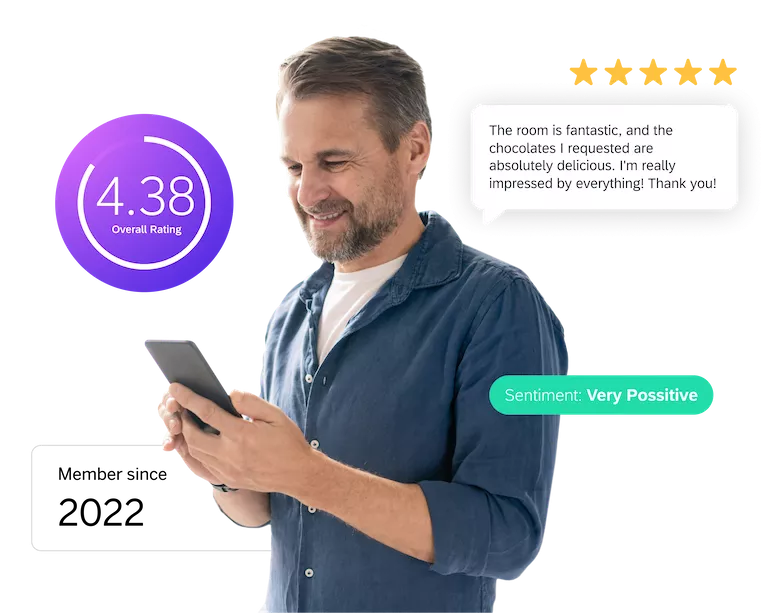
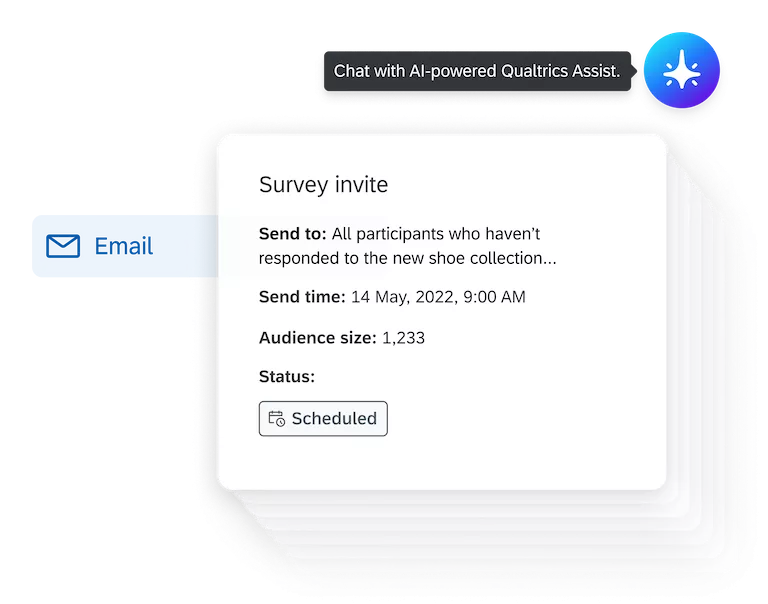
Measure and optimize your CX with AI-powered customer survey software
Gather, analyze, and act upon customer feedback across multiple touchpoints, driving loyalty, satisfaction, and overall business performance.
- Gather insights from various channels, including surveys, social media, and direct customer interactions, to provide a comprehensive view of the customer experience
- Leverage advanced artificial intelligence and Natural Language Processing to analyze diverse data types, offering real-time insights that allow organizations to make data-driven decisions and proactively address customer needs
Ebook_
Getting started: 5 Steps to integrate digital into your CX efforts
Getting started: 5 Steps to integrate digital into your CX efforts
With consumers living in a digital-first world, it's pivotal that successful CX programs have a strategy to not only listen and understand their digital experience, but to improve it as part of the end-to-end customer journey. Here are 5 steps to get you started on the process of building a customer-centric digital ecosystem.

Turn real-time website and app feedback into revenue
From direct website and app feedback to unspoken rage clicks, every customer interaction is a signal of what’s working and where to improve. Our customer feedback tool makes sense of mountains of data in seconds, giving your teams the insights they need to create digital experiences that convert and grow revenue.
- Listen to every type of website and app feedback – solicited, unsolicited and behavioral – so you can understand every customer and serve them as efficiently as possible
- Store every customer interaction across every channel to give teams a detailed view of behavior and sentiment
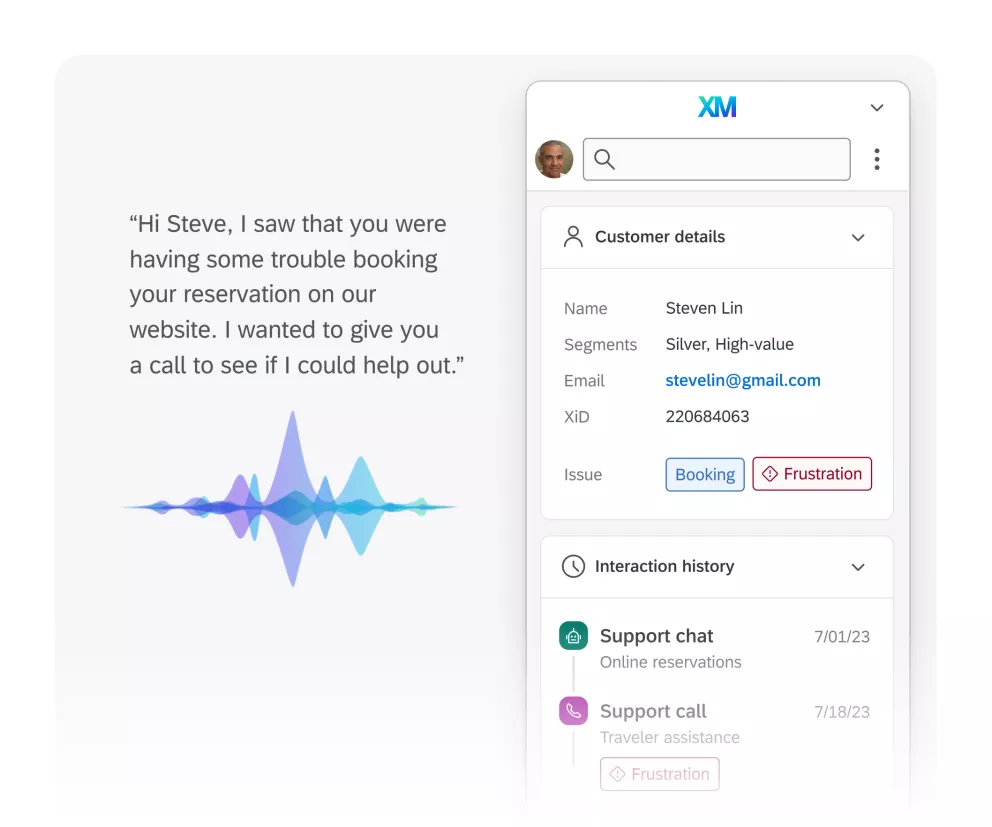
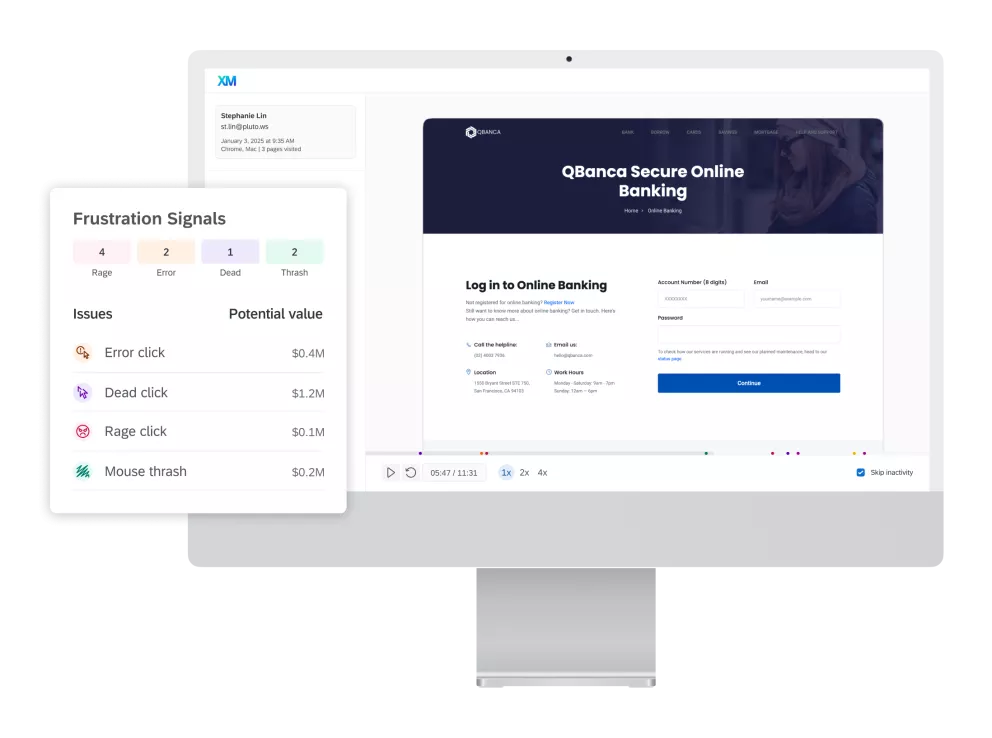
Find and bridge digital experience gaps – before they become chasms
Monitor every click, swipe, and journey, with behavioral breadcrumbs that turn your customers’ digital movements into actionable insight. And keep customer privacy a priority while you do it.
- Listen to every type of website and app feedback – solicited, unsolicited and behavioral – so you can understand every customer and serve them as efficiently as possible
- Transform negative feedback into actionable recovery strategies with targeted, follow-up questions that clarify customer experiences and concerns
eBook_
2025 Global Consumer Trends Report
2025 Global Consumer Trends Report
Since the launch of our consumer trends report 4 years ago, we’ve seen the effects of a global pandemic, inflation-led economic uncertainty, and the rise of AI. With responses from 23,730 consumers across 23 countries/regions, our consumer trends report outlines what businesses can expect next in 2025.

Make your contact center your competitive advantage
Gain immediate clarity on your contact center team’s strengths and weaknesses and seamlessly connect those actions to coaching plans.
- Qualtrics AI pinpoints exact examples illustrating where your team excels and needs help
- Reduce time spent analyzing dashboards and listening to calls to identify coaching opportunities
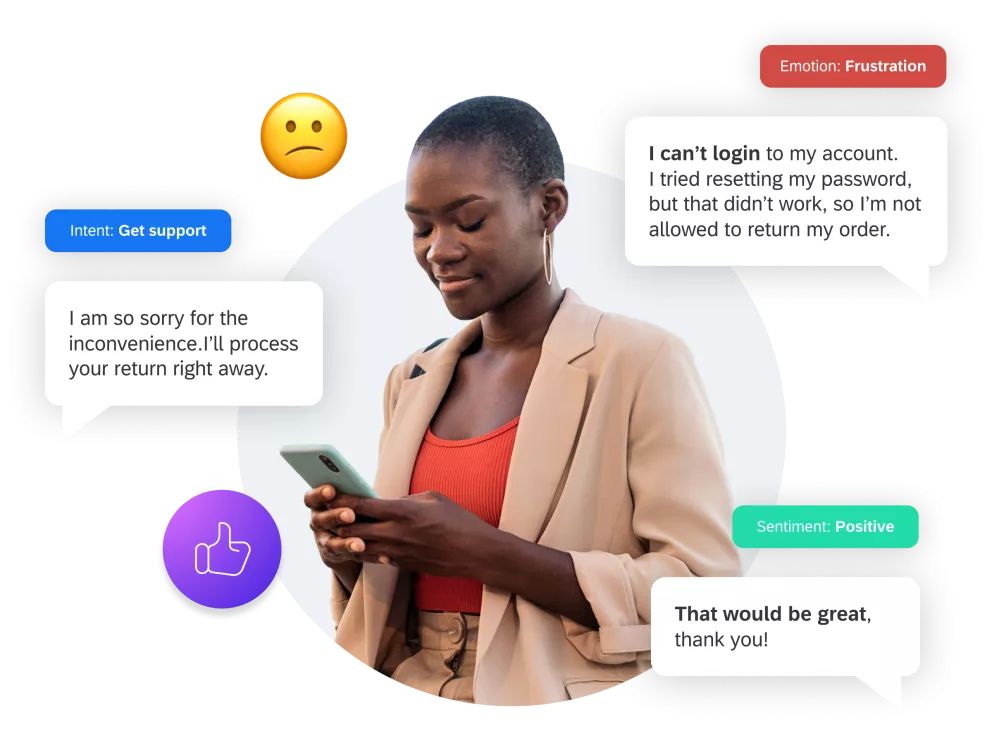
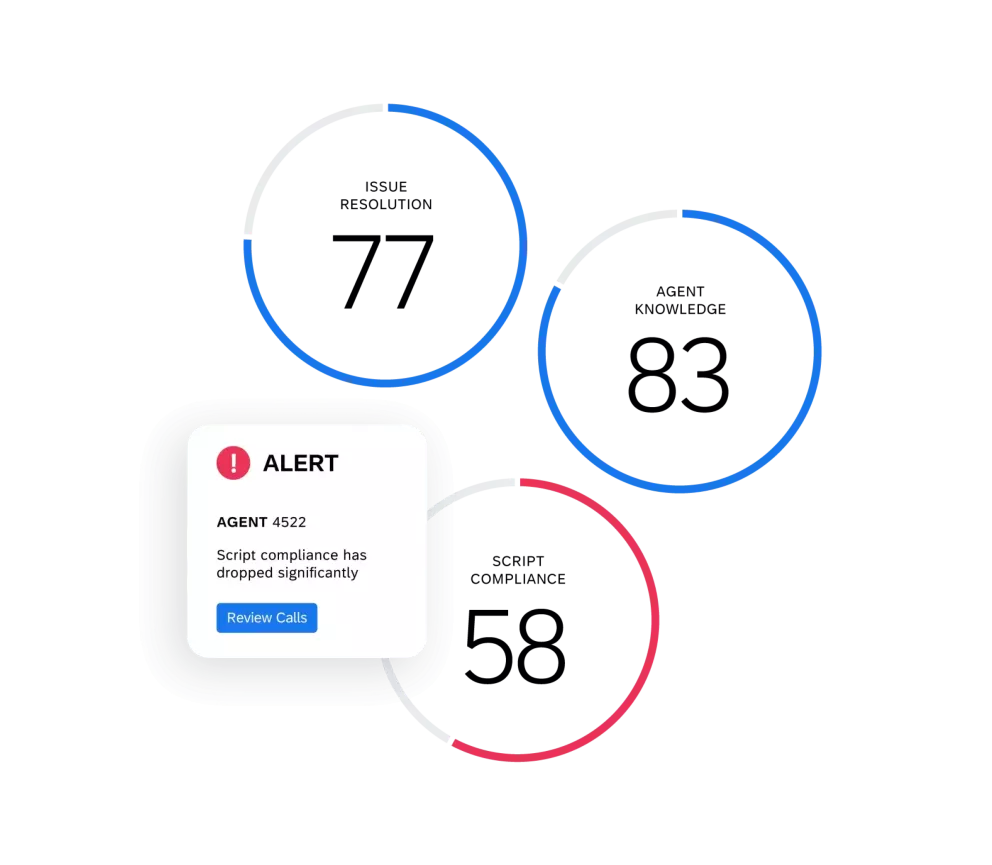
Improve customer service quality and mitigate risk with intelligent scoring across all interactions
Qualtrics’ AI-powered quality management solution scores every interaction in real time so you know how every agent is doing, and know every lever to pull to improve the experience for your customers while reducing operational costs.
- Automatically and intelligently score 100% of customer interactions to improve coaching, reduce bias, and mitigate risk
- Increase compliance by flagging risks, taking corrective action, and incorporating human intervention with automated quality management
Ready to see the XM Platform in action?
Ready to see the XM Platform in action?
Equip agents and managers with AI-powered insights and tools
Drive continuous improvement across the frontline with real-time coaching and recommended actions, helping agents to be the best they can be.
- Improve productivity and customer experience with personalized actions on how they can improve
- Build a customer-centric culture and improve agent engagement by seamlessly recognizing and rewarding great customer service at scale
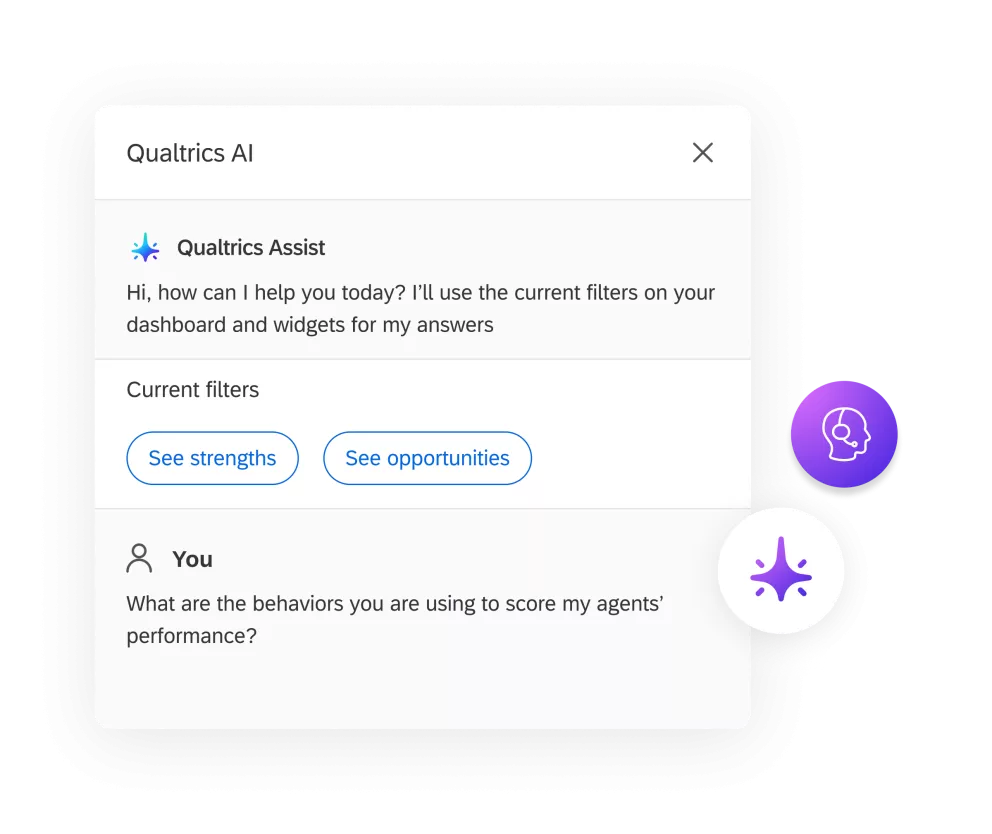
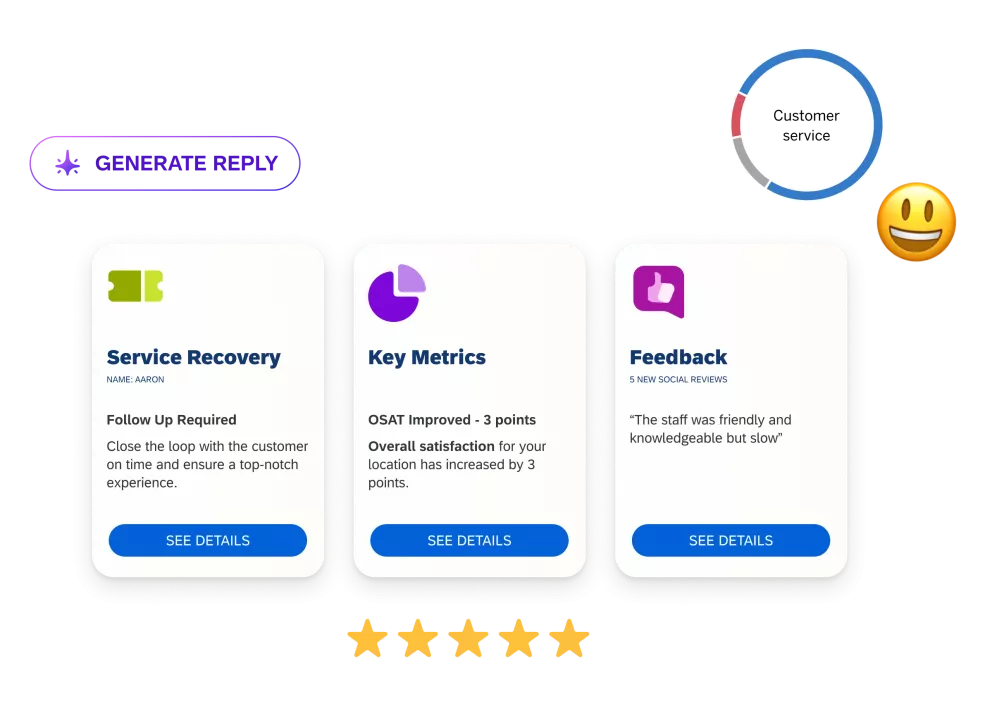
Better the in-person experience. Better the return.
Location Experience Hub helps you capture and analyze location-level insights, empowering your teams to tailor experiences that build loyalty in every store, simultaneously.
- Surface insights from location-specific feedback so local teams understand drivers of loyalty and churn
- Diagnose the root cause of problems with advanced AI, which automatically detects human sentiment, effort, and intent from every interaction
Understand and manage your online reputation
Build consistent brand perceptions and experiences by easily and publicly closing the loop on reviews directly in your dashboard with AI-generated responses.
- AI response suggestions help your team quickly resolve issues, freeing them to build stronger relationships
- Boost customer happiness with personalized, emotionally attuned support for thoughtful, unique interactions
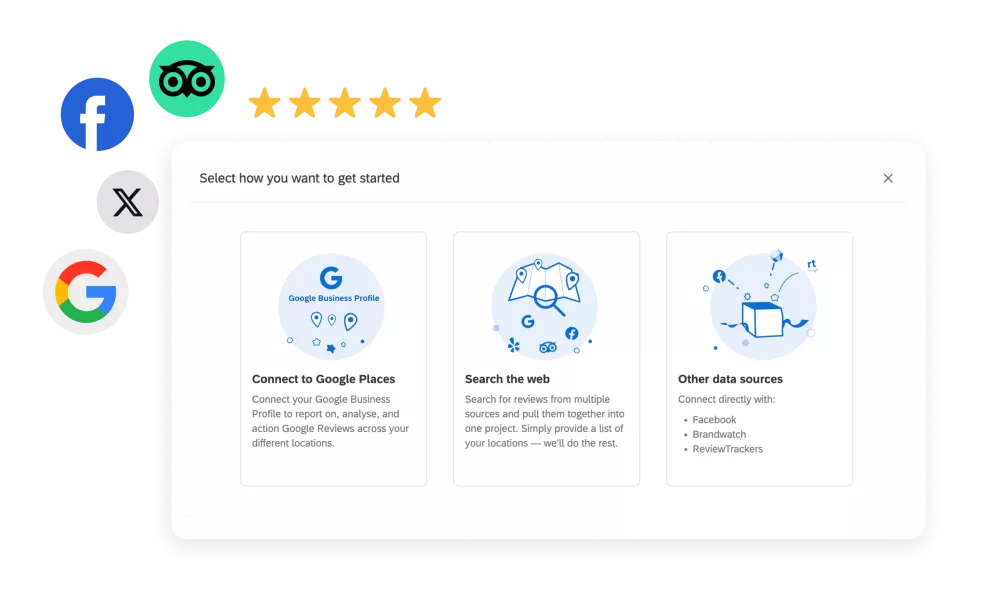
Upgrade your programs with flexible, scalable plans
Upgrade your programs with flexible, scalable plans
More customer experience solutions
More customer experience solutions